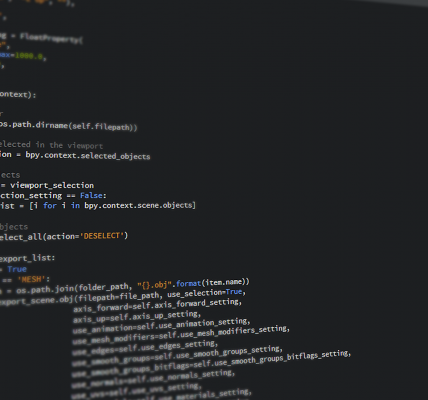
Guido van Rossum, a computer-programming scientist from the Netherlands did something exemplary in the year 1989. The exemplary thing that he ‘invented’ is known today as Python. Anyone who has even the slightest touch with the world of computers is well aware of the Python programming language. Guido van Rossum built Python simply as one of his Christmas Projects. He had no idea that the little project of his would take the computing world by fire. The common programming languages of that time have various sets of shortcomings like:
- Simplicity to code or understand the code was totally absent in the contemporary programming languages of that time
- Over line-endings that were scattered all over
- The code is literally tangled with curly braces
He wanted to create a new computer programming language that was free of all the difficulties mentioned above. Therefore, he created a language where
- Each snippet of code was properly indented with white spaces.
- In addition, he made a provision so that you as a Python user can customize your own packages for any specific modules of your own coding.
- These packages can be further used by your fellow Python users in their own endeavors for coding.
The best part of this programming language is that it is a free-source application where users do not need to pay anything for using it.
What is in a name?
Guido van Rossum wanted this new computer programming language to be an experience full of fun. It is so because the other primary contemporary languages like C, C++, Java, etc have an air of brute seriousness about themselves. On the other hand, Python seems like fun to learn and code as well. The best part to introduce fun in anything starts from its name. Therefore, von Rossum named his new programming language as Python after the famous Comedy Group from Britain, Monty Python. This name also served his purpose of having a name that would be “short, unique and slightly mysterious”. To add more fun, the package repository of Python is named as Cheese Shop.
With the passage of time, further analogies have been added to the legacy of the Python Language. For example, van Rossum can be compared as of the characters of Monty Python who by accident become a Messiah in a film known as ‘Life of Brian’. Just like the character of the film who did not want some fame, van Rossum to explains, “I certainly didn’t set out to create a language that was intended for mass consumption”.
The rise and rise of Python
A survey in the past couple of years back showed that only in the United States of America, the Google users have had Python in their searches more than that of Kim Kardashian (a major reality TV star in the US). Further researches show that queries related to Python training have tripled in amount since the year 2010. Moreover, there has been a steady decline or no increase in similar searches for other contemporary languages.
Popularity of Python
The popularity of Python has seen an increase of about 40% amongst professional developers who provide solutions to famous software-based companies. An additional 25% rise has been noted who would wish to either use or learn it. This data has been collated by Stack Overflow, which is a famous forum for enthusiasts in computer programming.
Codecademy is another website which a proud number of forty-five million learners worldwide, who learned to code on various languages with the aid of this website. The data that this website has collated shows that they have seen a huge increase in the demand for online Python training in recent times.
The easy coding process of Python is embracing even those who were once puzzled by the complexities of coding. The experts of Python are known as Pythonistas have been helping to enrich the Cheese Shop (the package repository of Python as described above) on a regular basis. In fact, until date, they have added 145,000 and more packages in there. These packages have covered almost all the aspects of the digital world from game development to astronomy. They have been doing such great work to not only to increase the popularity of the language but also to help novice learners like you and us.
The Creator’s Take on Python’s Popularity
There is no doubt that Guido van Rossum is extremely happy with the unprecedented success of Python as a programming language. As a matter of fact, many popular applications like Instagram have their code based out of Python. However, Mr. van Rossum is also worried about the issues that he might need to handle for supervising such a popular programming language. With the rising popularity of the language, van Rossum fears him of being some idol as he says “I’m uncomfortable with that fame” or when he says, “Sometimes I feel like everything I say or do is seen as a very powerful force.” In order to be free of such uncanny vibes, he officially retired as the caretaker of Python on 12th of July 2018. All the management of further operations and developments for Python he has handed over to the Pythonistas.
Flaws and Strengths of Python
Python has its own flaws. Its contemporaries can out win Python based on the following features:
- Processing Efficiency
- Specialized Capabilities
- Better control over computer’s processor
- Handling complex and large applications
- Major load on web browser applications
Despite the above shortcomings, the below primary features make Python everyone’s favorite choice:
- Simple Syntax
- Ease in learning and sharing
- Huge repository of various third-party packages
The various uses of Python
The versatility of the language can be observed not only amongst its users but also amongst the areas where it is extensively used. Some of its main uses are described below:
The Central Intelligence Agency is also known as the CIA has been known to use Python for its ethical hacking purposes
- Pixar has also used it for developing many of its famous films
- Google has also employed Python as its web page crawler
- The song recommendation software of Spotify has also used Python as its programming base
- Marketers have also deployed Python for building statistical models that measure campaign effectiveness
Python and Artificial Intelligence
If you happen to explore the Cheese Shop, you will definitely stumble upon some alluring packages that are known to harness the Artificial Intelligence (AI). Using these packages, users can make neural networks. These neural networks work just like the various connections within a brain. With such ability, these networks made out of the packages in the Cheese Shop can pick out numerous patterns within the huge data quantities, which are available. These flows of events create the basis of AI. Day by day, Python is becoming the first choice of the AI researchers that has been admitted by Mr. van Rossum himself. Needless to mention, such popularity in the AI world has been caused the Pythonistas to create various different AI related packages in the Cheese Shop.
The world of Artificial Intelligence is quite a risky venture. Cesar Brea who is a partner of Bain & Company, a consultancy has warned us about one of the scariest things of his trade by saying that someone who has learned a tool but doesn’t know what is going on under the hood. Any newcomer to the world of AI tackling with such huge open source libraries might get to dodgy conclusions. Therefore, things specially related to AI must have proper oversight. Bernd Ziegler who works as a partner for Boston Consulting Group, states that any analysis to aid Artificial Intelligence in the firm is reserved only for those who are an integral part of the data team that the firm has deployed.










![Watch Video Now on xiaohongshu.com [以色列Elevatione perfectio X美容仪 perfectio X 全新仪器黑科技了解下]](https://www.techburgeon.com/wp-content/uploads/2019/07/perfectiox-singapore-150x150.jpg)
